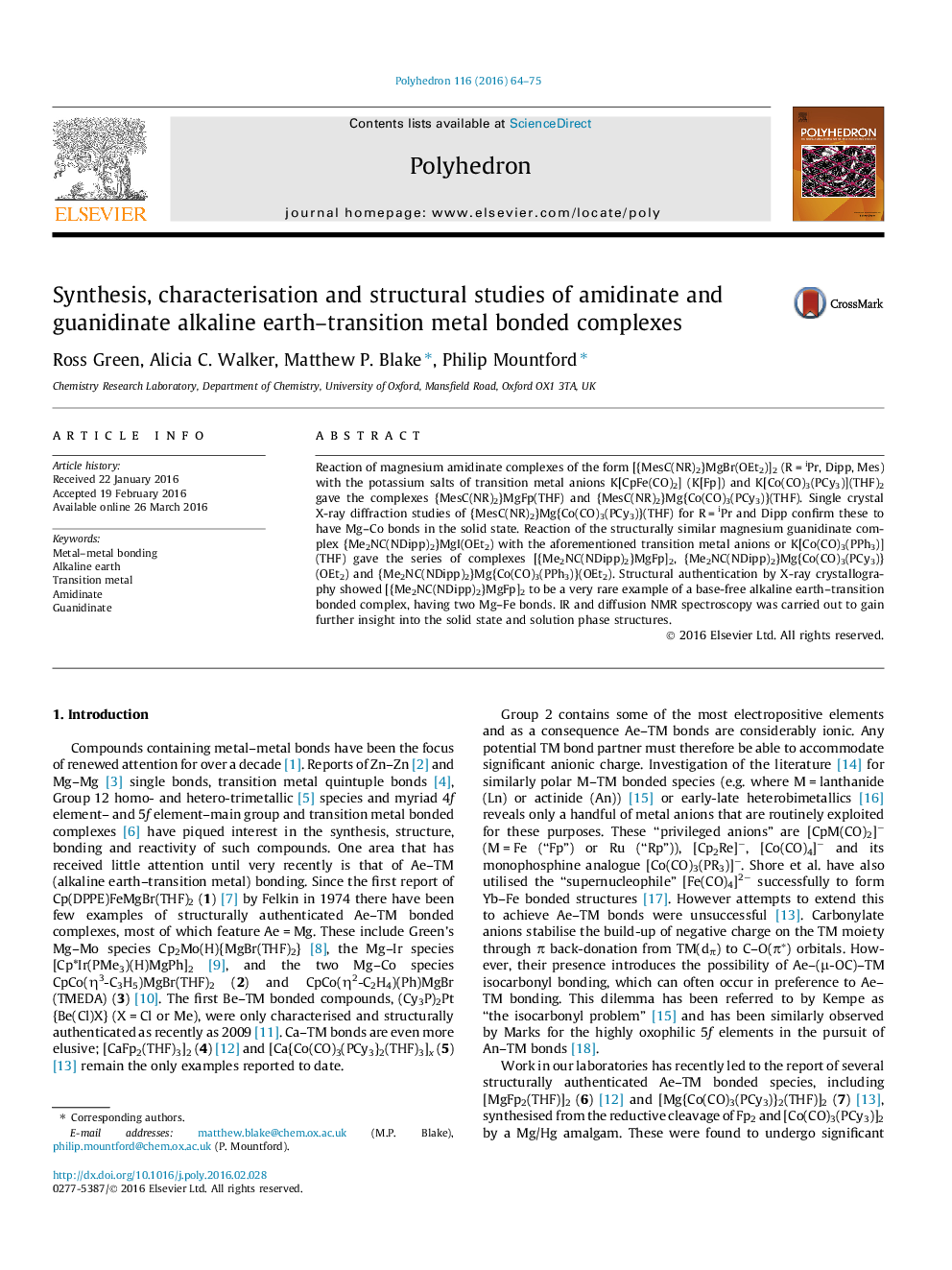| Article ID | Journal | Published Year | Pages | File Type |
|---|---|---|---|---|
| 1335009 | Polyhedron | 2016 | 12 Pages |
Reaction of magnesium amidinate complexes of the form [{MesC(NR)2}MgBr(OEt2)]2 (R = iPr, Dipp, Mes) with the potassium salts of transition metal anions K[CpFe(CO)2] (K[Fp]) and K[Co(CO)3(PCy3)](THF)2 gave the complexes {MesC(NR)2}MgFp(THF) and {MesC(NR)2}Mg{Co(CO)3(PCy3)}(THF). Single crystal X-ray diffraction studies of {MesC(NR)2}Mg{Co(CO)3(PCy3)}(THF) for R = iPr and Dipp confirm these to have Mg–Co bonds in the solid state. Reaction of the structurally similar magnesium guanidinate complex {Me2NC(NDipp)2}MgI(OEt2) with the aforementioned transition metal anions or K[Co(CO)3(PPh3)](THF) gave the series of complexes [{Me2NC(NDipp)2}MgFp]2, {Me2NC(NDipp)2}Mg{Co(CO)3(PCy3)}(OEt2) and {Me2NC(NDipp)2}Mg{Co(CO)3(PPh3)}(OEt2). Structural authentication by X-ray crystallography showed [{Me2NC(NDipp)2}MgFp]2 to be a very rare example of a base-free alkaline earth–transition bonded complex, having two Mg–Fe bonds. IR and diffusion NMR spectroscopy was carried out to gain further insight into the solid state and solution phase structures.
Graphical abstractThe first amidinate and guanidinate magnesium complexes with bonds to transition metals have been synthesised and structurally authenticated. IR and diffusion NMR spectroscopy provide further evidence for their structural forms in the solid state and solution.Figure optionsDownload full-size imageDownload as PowerPoint slide
